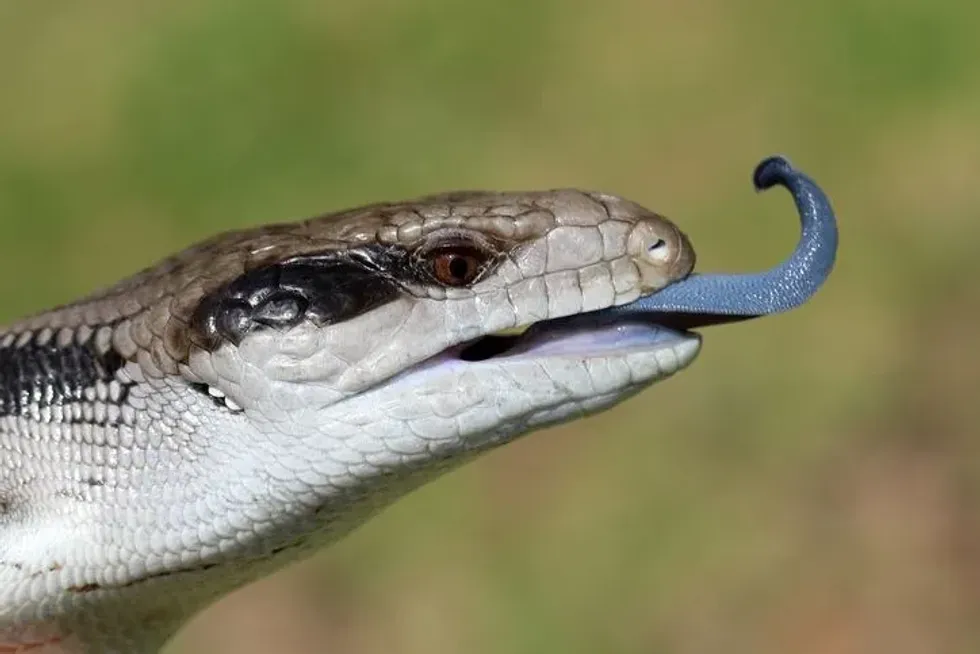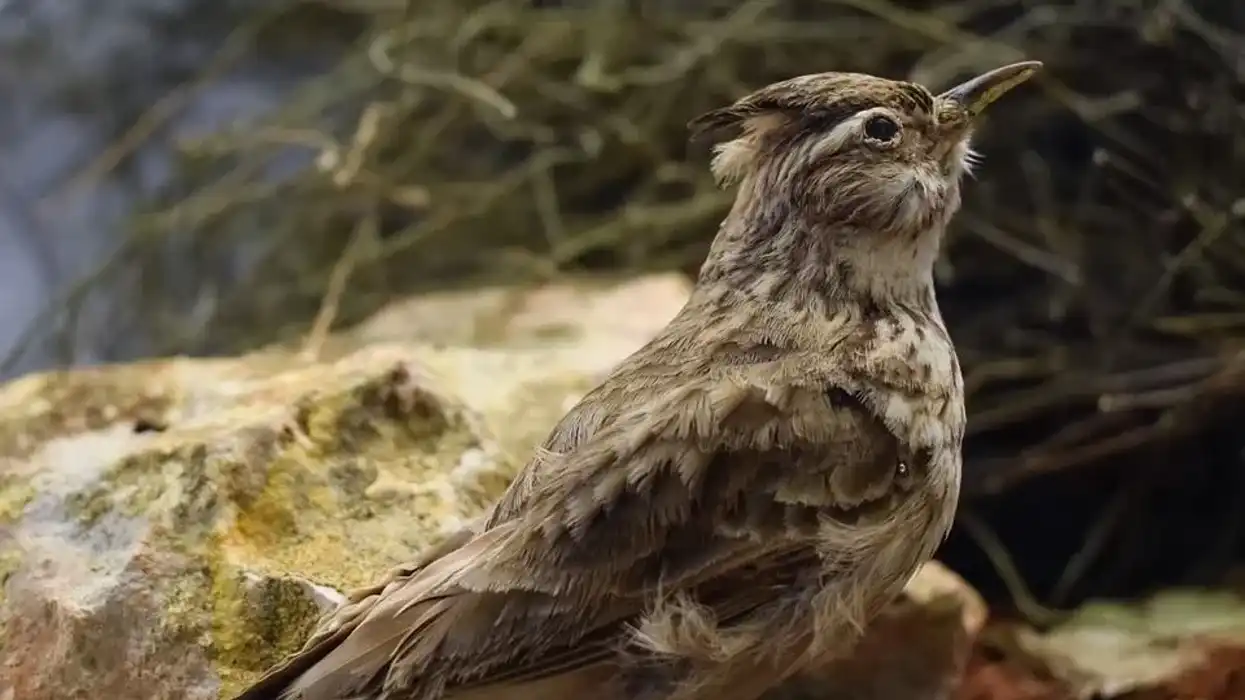Blue Tongue Skinks are an Australian genus of reptiles that belong to the Kingdom of Animalia, Class: Reptilia, Order: Squamata, Family: Scincidae, genus: Tiliqua, scientific name: Tiliqua scincoides. These skinks are famous for their characteristic blue tongues.
Blue-Tongue Skinks can be located in both New Guinea and in Australia. They are shy at first, but overall they're very friendly. They are known to love attention. They like scratches on their head or under their chin.
On average, a Blue Tongue Skink costs from $150 to a few hundred USD. These skinks are not dangerous, and their bite is not poisonous.
They do not like to be handled because they are not domestic but are wild animals. After taming, they don't mind being held; in fact, they sometimes crave some cuddles. Blue Tongue Skinks are smart and inquisitive, they are considered one of the most intelligent pet lizards.
The female Blue-Tongue Skink has a gestation period of 100 days, and then the mother gives birth to a live young. They usually have 10 to 15 babies each reproductive cycle.
Here on our page, we have lots of Blue-Tongue Skinks facts that everyone will enjoy. Let's have a look at these interesting facts, and if you do like these, then do read our kagu and frilled lizard.
Blue-Tongued Skink Interesting Facts
What type of animal is a Blue-Tongued Skink?
Blue-Tongued Skinks are large and docile lizards that comprise a sturdily built body with an unusually large head. The skink consists of distinct color patterns ranging from light brown streaks to several earthy tones of brown and silvery grey.
What class of animal does a Blue-Tongued Skink belong to?
The Blue-Tongue Skink belongs to the class of Reptilia.
How many Blue-Tongued Skinks are there in the world?
There are around ten kinds of species in Blue-Tongued Skinks on the planet, which are of different sizes. Their exact population is not recorded.
Where does a Blue-Tongued Skink live?
Blue-Tongued Skinks are located in New Guinea and primarily Australia.
What is a Blue-Tongued Skink's habitat?
Blue-Tongued Skinks inhabits woodlands, grasslands, and agricultural areas, but they easily adapt to urban environments like parks and gardens. The thick bodies of these skinks and short legs make them better adapted to burrowing and digging on the ground.
Who does Blue-Tongued Skink live with?
Blue-Tongues Skinks are solitary animals; if they are kept together for a long time, they may eventually fight with one another. They usually prefer to live alone.
How long does a Blue-Tongued Skink live?
The average lifespan of Blue Tongued Skinks is around 15-20 years, but if they are given healthy conditions and high-quality care, they can live up to 30 years.
How do they reproduce?
Blue-Tongued Skinks are ovoviviparous, the offspring develop eggs that are retained and hatched inside the mother's body. Female Blue-Tongued Skinks have a gestation period of 100 days. The reproduction of Blue-Tongued Skinks is viviparous, where the eggs get matured and form embryos within the mother's oviduct that are appended to the placenta.
Then the mother skink gives birth to live young ones. The young ones normally arrive in December and January. The skinks usually have 10 to 15 babies for every reproductive cycle.
What is their conservation status?
The conservation status of Blue-Tongued Lizard by the International Union For The Conservation Of Nature is Endangered, which means drastic measures have to be taken for their conservation.
Blue-Tongued Skink Fun Facts
What do Blue-Tongued Skinks look like?
Blue-Tongued Skinks are considered ground dwellers with an elongated and flattened body that somewhat resembles a snake in appearance. They are docile, gentle, quiet, and easily tamed; that is why they can make great beginner pets.
Blue Tongue Skinks are native to Australia, and they have a distinct blue tongue, long tail, short legs, and dull teeth. They are one of the most intelligent reptile species in the world.

(The Blue Tongue Skink has a scaly appearance with a mix of grey, bronze, brown, black, and white.)
How cute are they?
The Blue Tongue Skink resembles a snake in appearance, and they are not cute. Their gentle, quiet, and docile nature, when properly trained, might attract you.
How do they communicate?
The mode of communication of Blue Tongue Skink, just like other lizards, is body language. They tend to flash out their tongues, look at other lizards, maintain eye contact, and run away. Quite notorious if you ask us!
How big is a Blue-Tongued Skink?
The Blue-Tongued Skink is a medium-sized lizard and ranges between 15 and 30 inches in length or about one to two feet. They generally range between 11-23 in (30-60 cm). The size can vary based on different factors.
How fast can a Blue-Tongued Skink move?
They have tiny legs but can move quickly due to their size. Their speed is 65 mph (104 kph) on a flat surface. That's impressive, right?
How much does a Blue-Tongued Skink weigh?
They usually weigh about 1 lb (450 g).
What are their male and female names of the species?
They do not have gender-specific names as such.
What would you call a baby Blue-Tongued Skink?
They are referred to as 'baby skinks'.
What do they eat?
Blue-Tongued Skinks are omnivores. Their diet comprises insects, snails, larvae, slugs, and other invertebrates. They also eat soft fruit, flowers, greens and seeds, and other reptiles that include smaller skinks, eggs, hatchling birds, and carrion.
Are they poisonous?
Blue Tongued Skinks are not poisonous, but they leave their mouths open to intimidate their predators.
Would they make a good pet?
Blue-Tongued Skink (Tiliqua) is a large and diurnal lizard. The appetite of Tiliqua scincoides for slugs and snails makes it one of the favorite pet among gardeners in Australia.
These lizards are pretty easy to care for, have low maintenance, and make good pets as long as owners are prepared for them due to their relatively large size compared to other pet lizards.
Did you know...
Bluetongue Skinks sneeze a lot! Their nasal passages clog with dirt or sand as they use their heads and noses to push and dig through the sand.
What are Blue-Tongued Skinks known for?
The Blue-Tongue Skink is the most famous skink due to its unique bright blue-tongue appearance.
Getting your own Blue-Tongued Skink
Depending on your country, you may require a reptile keeper license to keep one of these reptiles as a pet. Just keep these pointers in mind before you make the decision.
Most of the species of Blue Tongue Skinks (Tiliqua scincoides) get quite large, and adult species reach up to 11-23 in (30-60 cm) in length. These skinks don't need branches for climbing because they are strict ground dwellers.
Blue-Tongued Skinks are native to Australia, so the temperature should be warm with 75-85 degrees F (24 to 29 degrees C). Skinks are omnivores; hence, variety is the key to a nutritious diet when it comes to their food.
A calcium and vitamin-D supplement should be added to the food regularly, which will help prevent metabolic bone disease.
You should attempt a balanced diet of 60 percent vegetables or fruits and around 40 percent of meat items. For example, their diet may include green beans, squash carrots, parsnips, leafy greens, super-worms, and more.
Once ready, you can head over to your local pet store to get yourself a cute little reptile buddy.
Here at Kidadl, we have carefully created lots of interesting family-friendly animal content for everyone to discover! Learn more about some other reptiles, including rattle snake or python.
You can even occupy yourself at home by drawing one on our Blue-Tongued Skink coloring pages.










